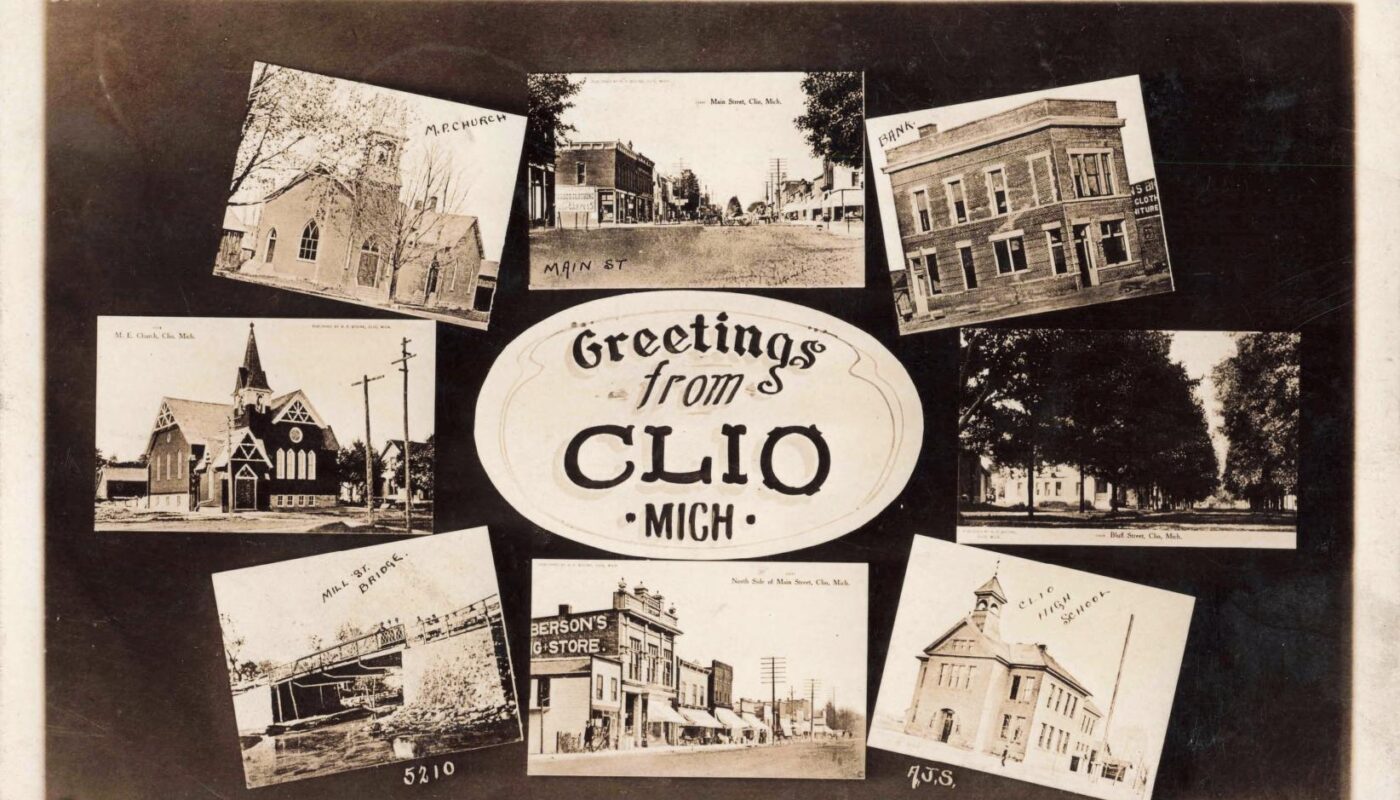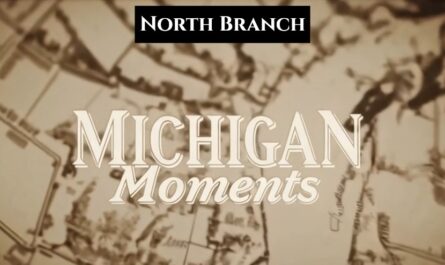Clio, Michigan — once a small farming outpost along the Pere Marquette line — evolved into a hub of industry and commerce during the early 20th century. The images that survive from the 1890s through the 1940s tell the story of that transition.
Video
Railroads Shaped Early Clio Michigan

The Pere Marquette Railroad Depot was Clio’s gateway to the wider world. Farmers shipped crops. Merchants unloaded crates. Families waited for letters or to visit relatives. The depot was long, plain, and functional, but it brought life to the town.
Trains connected Clio to Flint, Saginaw, and beyond. Daily schedules were posted in the general store, and locals could time their errands by the sound of the whistle. For many residents, the depot was the first thing they saw when they came to town, and often the last before they left.
The depot was also where newspapers and national magazines arrived. Local businesses advertised in regional circulars, and itinerant salesmen would hop off to peddle their goods. This flow of people and ideas helped transform Clio from a farming settlement into a trading center.
Local Trade and Labor
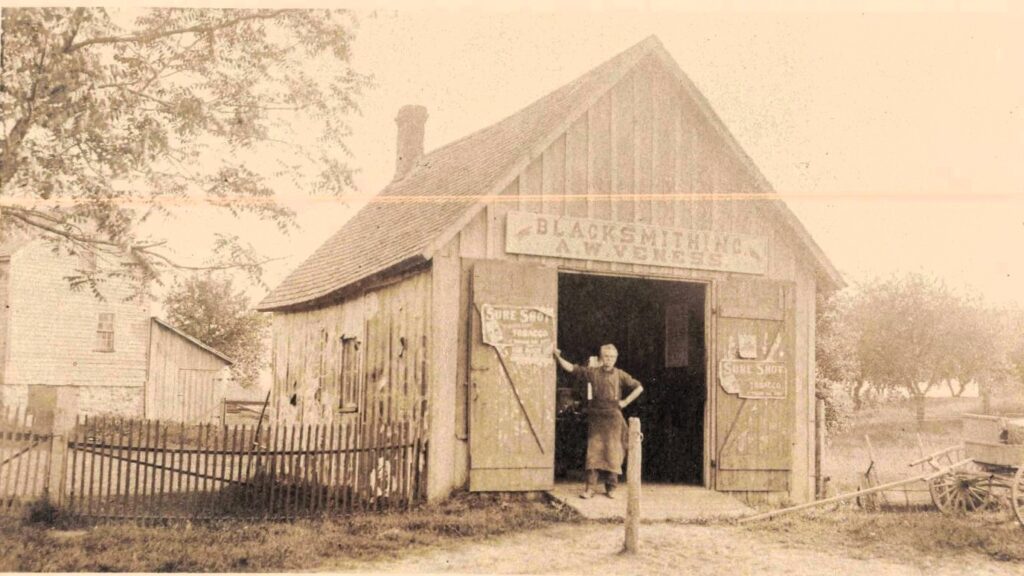
One of the most revealing photos shows a blacksmith standing in front of a small, rugged workshop. The hand-painted signs suggest tobacco sales, a common sideline for tradesmen. In early Clio Michigan, a shop wasn’t just for one job. It was a little bit of everything — forge, counter, and social hub.
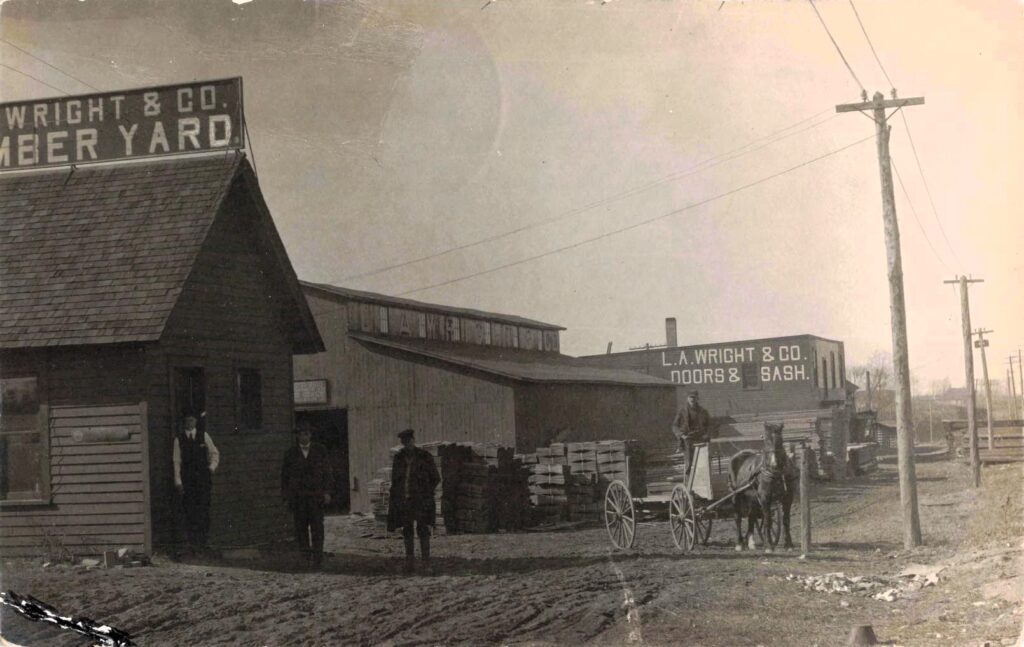
Nearby, the L.A. Wright lumber yard and sash company did brisk business. Stacks of milled wood filled the yard, ready for homes, barns, and storefronts across Genesee County. These photos capture an industrial rhythm — sawdust on the ground, railcars lined up, men in overcoats and fedoras.
Jobs were often seasonal. Men who worked the yards in summer might shovel coal for the railroad or help with snow removal in winter. Children contributed too, delivering goods or helping sort scrap lumber.
Clio Michigan Main Street Commerce
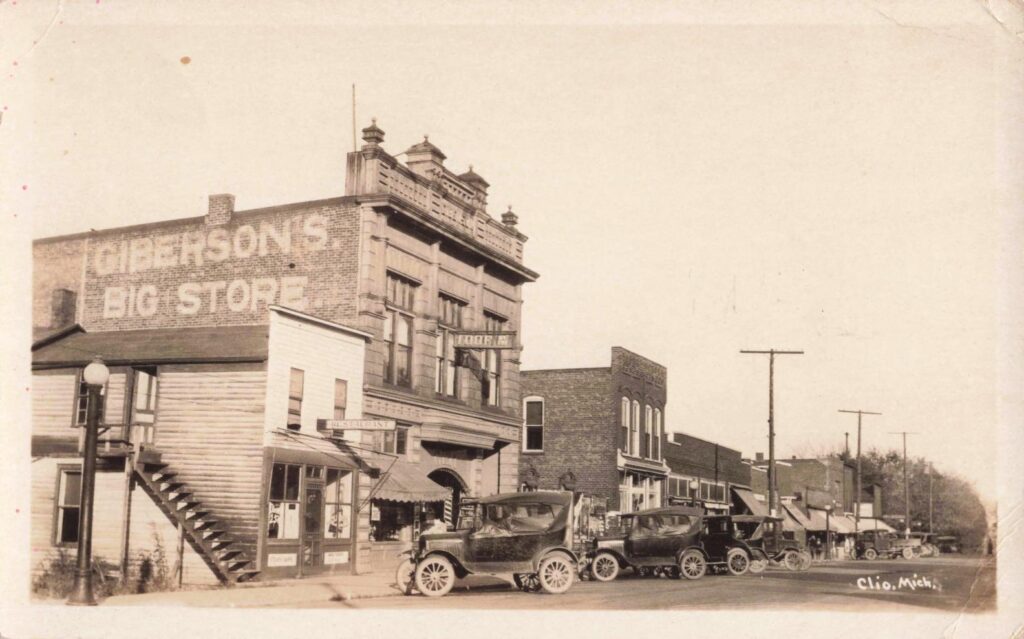
Vienna and Main streets are featured in several postcards. Brick buildings and wooden facades lined the roads. Businesses included Schofield & Meeks Dry Goods, Giberson’s Big Store, and a number of local banks. Ice cream shops and cafes came later, reflecting new tastes as automobiles changed the pace of daily life.
Clio’s commercial strip grew in tandem with regional development. Nearby Flint’s rapid expansion during the rise of the auto industry meant that small towns like Clio gained access to new markets. Storefronts updated their signage. Tailors, barbers, grocers, and dry goods sellers found new customers in rail workers, teachers, and traveling salesmen.
Electric streetlights and telephone poles began to appear, adding a sense of modernity. Clio’s post office became a vital artery of communication. When mail arrived on the train, it was sorted and walked through muddy or snow-packed streets to be delivered by hand.
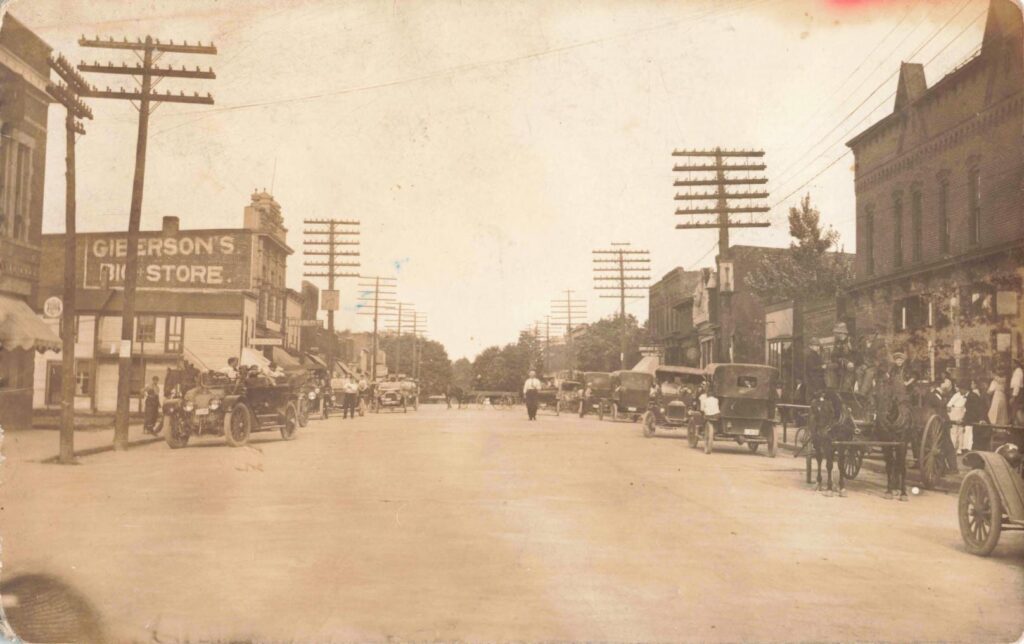
You can see the shift in the photographs. In one image, horse-drawn wagons wait beside storefronts. In another, rows of Model Ts and streetlamps dominate the scene.
Institutions and Community
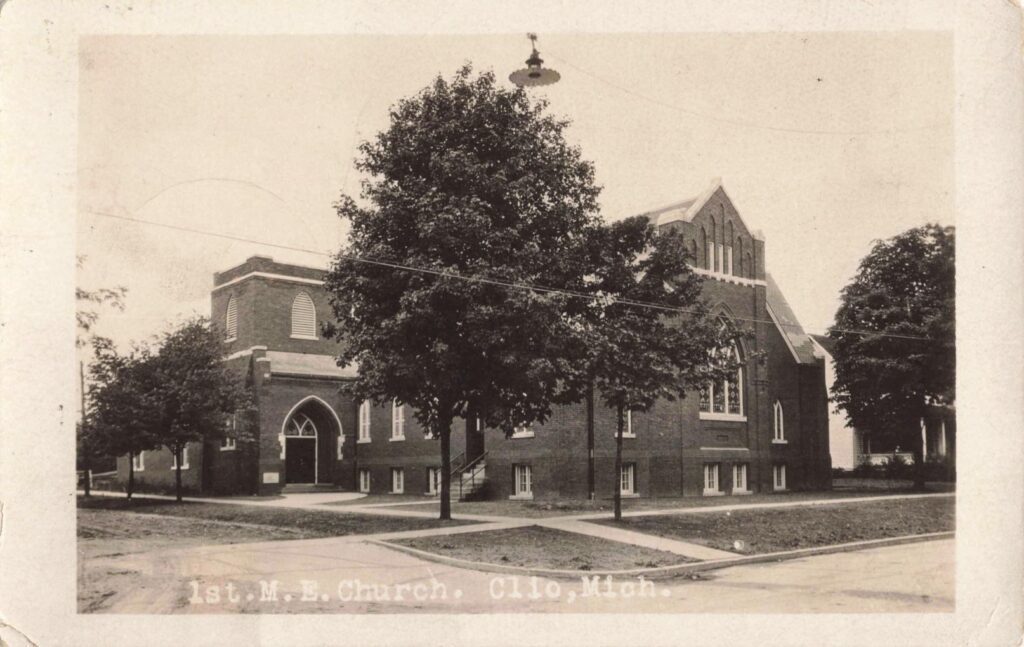
Clio’s public institutions also played a central role. The First Methodist Episcopal Church, built of brick with detailed stained-glass windows, was more than a spiritual center. It anchored the town socially and architecturally.
Church picnics and revival meetings were major community events. Bells from the tower could be heard for blocks, calling residents to Sunday service or civic gatherings.
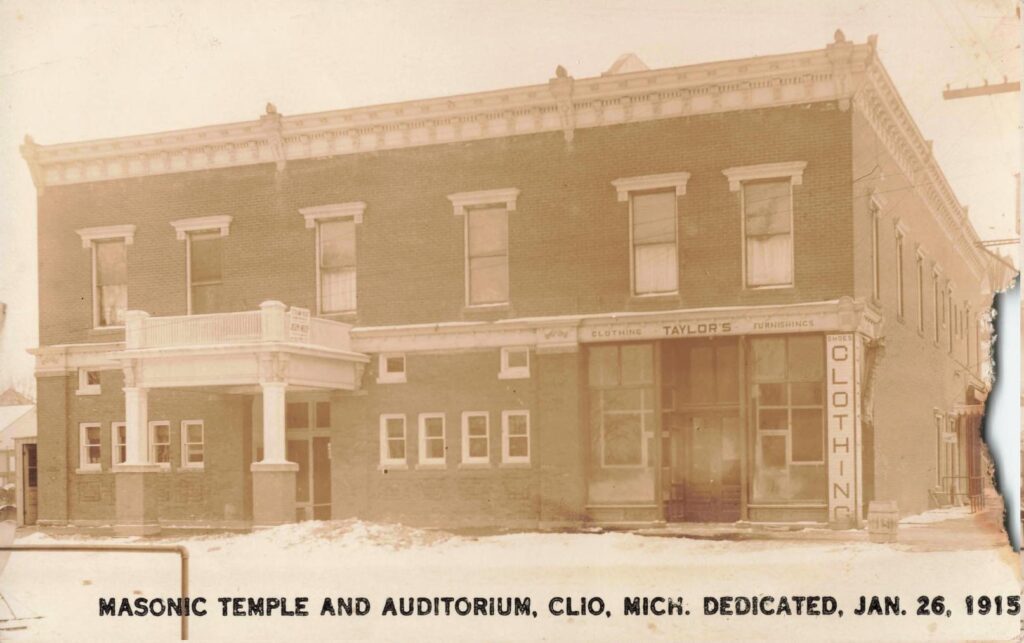
The Masonic Temple, dedicated in 1915, shows Clio’s civic ambition. The two-story building also served as an auditorium. Events, speeches, and ceremonies made it a vital part of public life.
By the 1930s, fraternal groups like the Masons, Odd Fellows, and Women’s Relief Corps provided structure for charitable work, social aid, and youth mentorship. These groups reinforced values of self-reliance, order, and mutual support — principles that defined the era.
The Rise of the Automobile in Clio Michigan
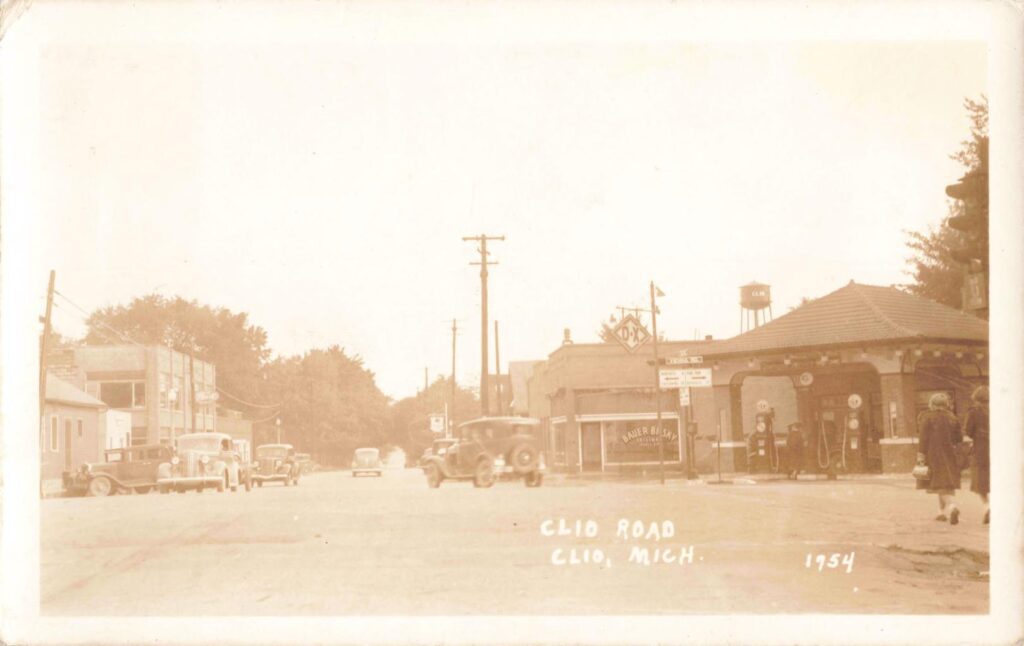
Clio didn’t explode into a metropolis. But it didn’t stay a dusty railroad town either. Instead, it gradually adopted electric streetlights, paved roads, and corner gas stations. In one photo from the 1930s, a DX service station sits beside a Chevrolet dealership. Behind it, the church’s steeple still rises — a reminder of what came before.
Gas stations like Bauer Brothers filled more than their tanks. They offered road maps, mechanic work, and sometimes a cup of coffee. With cars, families in Clio could drive to Flint for factory work or weekend shopping. But they still returned home to Clio’s quieter streets.
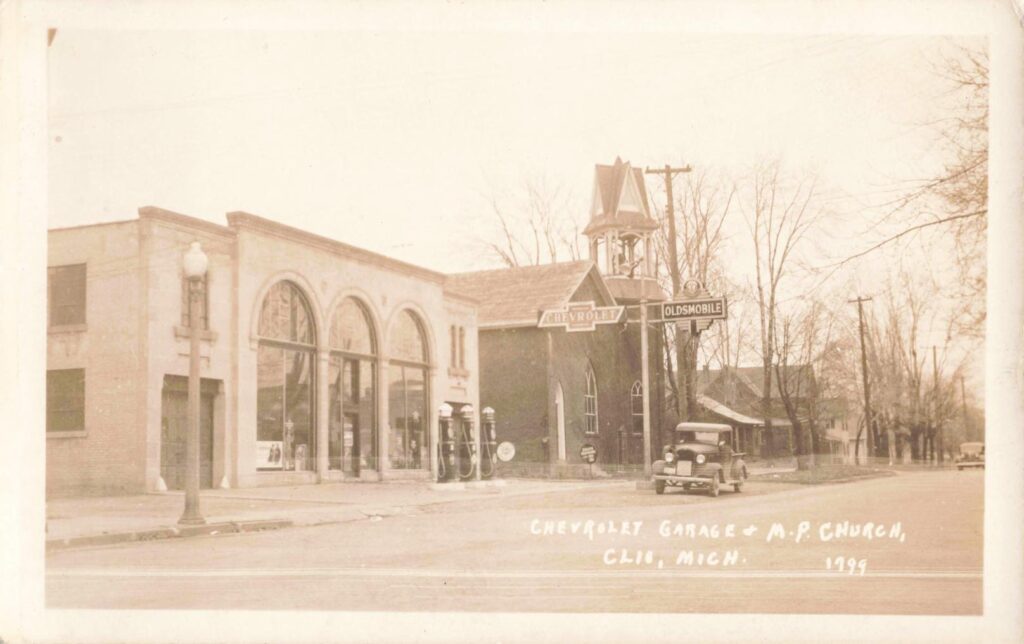
As automobiles replaced horses, storefronts shifted. Hitching posts were removed. Cafés added parking spaces. Ice cream parlors and soda fountains emerged as popular hangouts for teenagers. By 1940, Clio’s Main Street had become a mix of old habits and new expectations.
The Enduring Face of Clio
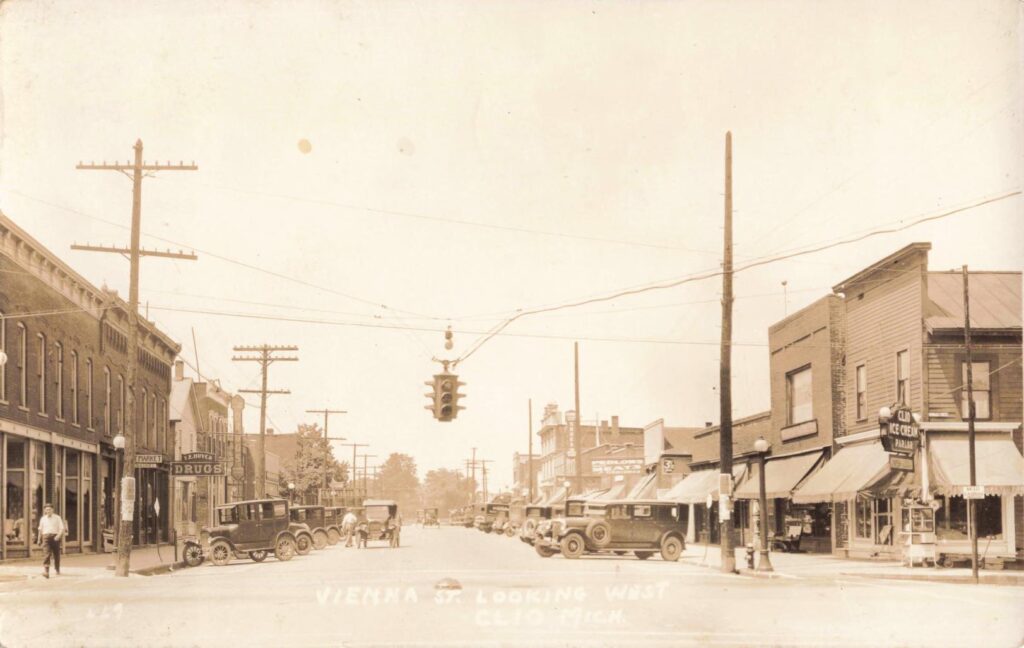
Today, many of the buildings shown in these images are gone or changed. But the structure of Clio — its layout, its spirit — remains. The echoes of its early days still shape the town.
Clio Michigan isn’t just a point on a map. It’s a place where movement, memory, and people have always crossed paths.

